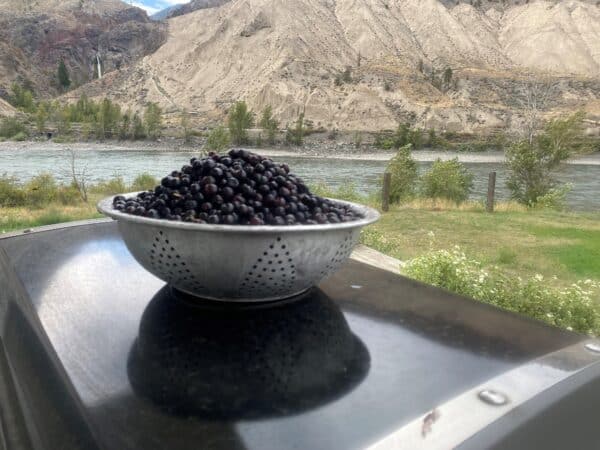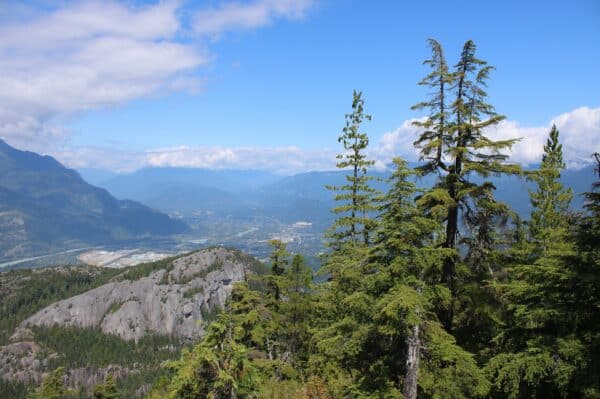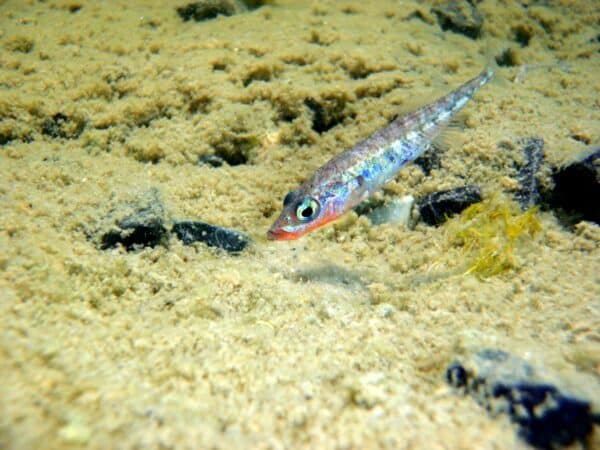By Lisa Houle | September 24, 2024
Preventing the spread of invasive plants and animals takes a village. At ISCBC, we work with many regional partners, experts in their unique corner of the province, dedicated to protecting biodiversity. Together we are making a difference!
One of these partners is the Sea to Sky Invasive Species Council (SSISC). SSISC was founded in 2009 through a collaboration with local biologists, representatives from municipal, regional and provincial governments, the Squamish Nation, horticulturalists, and other volunteers concerned about the impacts of invasive species in the Sea to Sky Region.
The SSISC team is fond of the region’s climate, ecosystem and geomorphologic diversity – from snowy peaks to green meadows, dry slopes, and rivers flowing to the ocean, all supporting diverse plant and animal communities. And they want to keep it that way!
This organization is known for its innovative approach to invasive species. Staffed by dedicated volunteers, SSISC’s ‘Banish Burdock’ program runs during the summer season (May/June until the end of September). The program launched in 2018 and invites those living in Whistler to ‘adopt’ a section of trail or a patch of public land and keep it free of invasive burdock.
“Focusing on the Whistler public paved trail network (commonly called the Valley Trail) made sense to us because it is heavily used by pedestrians, bikes and animals (pets and wildlife alike), so it has the potential of acting as a significant vector of spread for burdock,” said Micaela Anguita, SSISC’s Executive Director. She notes there were several reasons SSISC decided to target burdock specifically. “Regrowth comes up quickly, so ensuring regular monitoring and continued control is valuable. The seed bank has limited viability (measured in how many seeds will turn into plants) so manual control yields noticeable results quickly. And burdock responds well to proper mechanical treatments, making plant removal both safe and feasible for members of the public.”
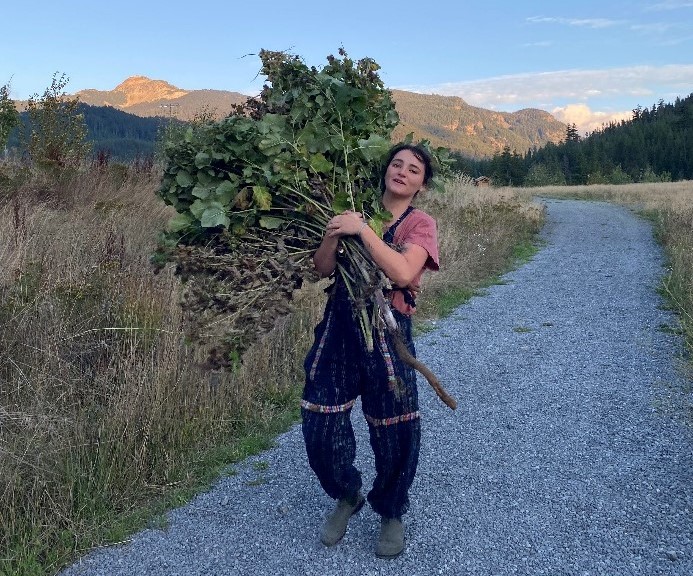
Burdock is known for its clinging burrs that attach and cling to wild and farm animals. These burrs are strong enough to trap birds and bats and were the inspiration behind Velcro. Before the Banish Burdock program started, burdock was so plentiful in Whistler that it lined the trails. Progress has been significant since then.
“In some neighbourhoods, many trail segments previously infested are now virtually burdock-free. We still encourage volunteers to monitor those areas, but they aren’t expected to remove more than a handful of plants over the summer,” said Micaela. “It’s encouraging to see the difference from one year to the next, and to witness native plants like thimbleberries and pearly everlasting gaining ground after burdock has been removed.”
Banish Burdock volunteers look after their trail segment or patch of public land on their own schedule. In 2024, 11 groups (19 participants total) adopted 21 sites for the summer season. Recently, SSISC hosted a meet-up at a public park, helping connect like-minded volunteers, where participants helped cut flowering burdock stems.
“By removing the seedheads (burrs), we help reduce the plant’s ability to ‘hitchhike’ on people, pets and wild animals, and spread in the area. What’s more, the soil is currently very hard after a rather dry summer, so digging out taproots is extremely challenging. Deadheading burdock in late summer is a good stopgap method to minimize the presence of new seeds,” said Claude-Anne Godbout-Gauthier, SSISC’s Communications & Outreach Manager. “The volunteers were real gems! They worked together tirelessly to cut down and transport the flowering stems, which they piled up on tarps. In just one hour, they filled 10 tarps with burdock stems!”
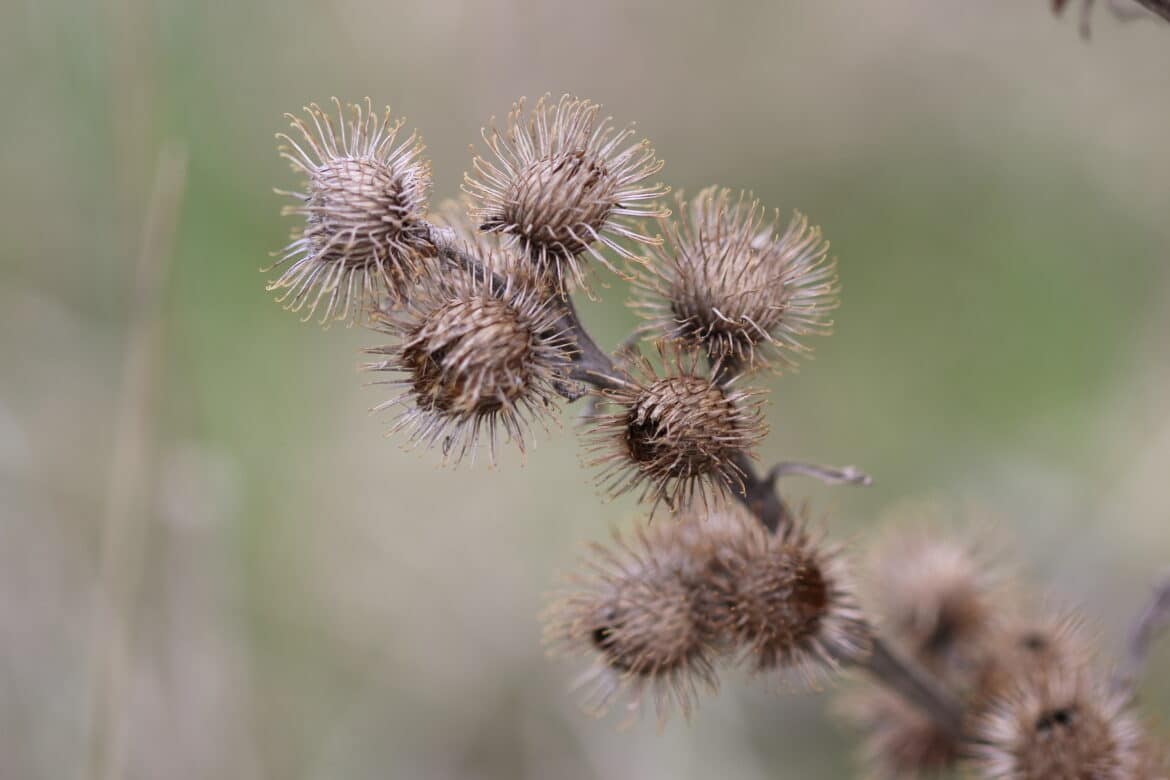
The tarps were transported to a central location for municipal pickup. The remaining burdock plants were flagged and will be dug out once the soil is wetter this fall.
To help with burdock removal, SSISC encourages interested individuals to contact them directly.
“We have encountered evidence of ‘guerilla gardening’ on Whistler’s trails, having come across piles of burdock that have been cut down and improperly disposed of (often left in place). When burdock plants are cut at the base rather than being dug out, we have observed that the plants grow back with many stems that flower lower to the ground,” said Claude-Anne. “In 2022 we hung informational posters near the sites where ‘guerilla gardening’ had been observed. While we are happy to hear that there is a desire among Whistlerites to look after their trails and natural spaces, our goal is to educate the community members who are concerned with burdock in hopes that they would either join Banish Burdock formally or at least change their approach to burdock control.”


SSISC thanks all Banish Burdock volunteers!
“It is heart-warming to meet and work with Whistler volunteers from all walks of life. Their enthusiasm is palpable, and we are so grateful for their help! We leave every volunteer meet-up with a warm fuzzy feeling that uplifts us,” said Micaela.
It has also been a positive experience for the volunteers:
“In 2023, I volunteered for the Banish Burdock program, which proved to be an excellent way for me (a newcomer to the area) to engage with the community and contribute to environmental stewardship without needing to commit to specific dates. The program provided a valuable opportunity to better understand and appreciate the local trails and native habitats. This experience was truly enlightening and made me realize the importance of being aware of one’s environmental surroundings as a crucial first step toward making meaningful changes. It is fulfilling to be involved in such a significant initiative within my local community.” – Becky Turner, Education & Outreach Coordinator and Banish Burdock volunteer
Learn more about how to control Burdock at: https://ssisc.ca/invasives/invasive-plants/burdock-2/
Lisa is a Communications and Outreach Coordinator at ISCBC. She values a diverse environment and connecting with others about environmental protection. In her spare time Lisa enjoys spending time at the ocean and beach combing for sea glass. You can reach Lisa at lhoule@bcinvasives.ca
Share



